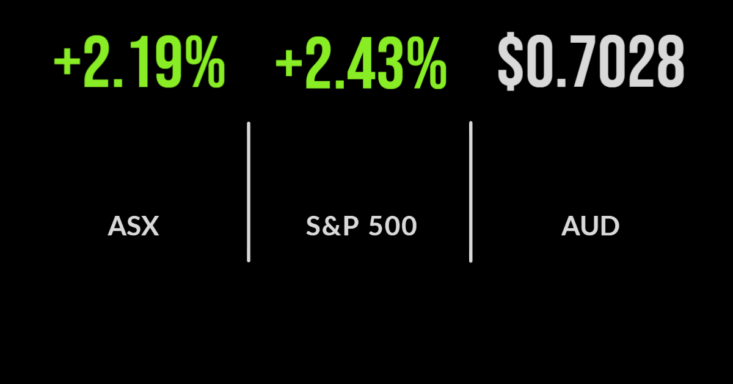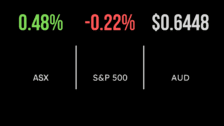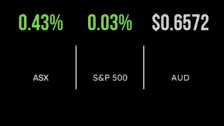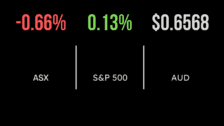Trees of green, volatility, bond yields fall, market rallies, ResMed reports
Australian investors had some respite on Friday, as volatility disappeared and the S&P/ASX200 gained 2.2% to finish the week.
There was little news driving the rebound, aside from perhaps the realisation that whilst rates may rise sooner than expected, they remain fixed near zero.
CSL (ASX: CSL) was a major contributor, gaining 3.2% after a difficult week, but it was the consumer sectors, both discretionary and retailers, that drove returns gaining 3.3% each.
Traditional value sectors and the beaten-down technology group continued to underperform.
Big names delivered strong rallies including Boral (ASX: BLD), and Macquarie (ASX: MQG) which gained close to 5% each.
ResMed delivered another 12% in top-line revenue growth, hitting US$894.9 million, however, margins weakened by more than 1% as cost pressures continued to bite.
Profit increased 12% as US growth in sleep apnea product sales resumed; shares finished broadly flat.
Over the week the market still finished 2.6% lower, with every sector finishing in the red, but technology feeling the brunt of the selling pressure, as borderline profitable companies suffered significant drawdowns, pulling the group down more than 7%.
US market bounces back, higher for the week, Apple’s powerful quarter
The week ended in the opposite way it began, with investors clearly looking beyond the threat of rate hikes and back towards earnings, sending all three benchmarks higher.
A strong GDP growth result was followed by an unexpected fall in consumer spending in December, which suggested the consumer may not be overheating as much as expected.
The result was a 3.1% gain in the Nasdaq, with 95% of constituents finishing higher including Apple (NYSE: AAPL) which gained 7% and Australian-born Atlassian (NASDAQ: TEAM) which gained 9.7% after a strong earnings report.
Apple also supported the S&P500, which added 2.4% with the Dow Jones underperformed as the rotation into so-called value stocks reversed, up 1.7%.
Despite flagging missed sales of as much as US$6 billion, Apple managed to smash the quarterly revenue record, reaching US$123 billion in December, that being the entire market cap of CSL in revenue in 90 days.
The result saw earnings jump to US$34 billion, on the back of a record quarter for iPhone sales, up 9%, driven by a surge in Chinese demand for the iPhone 13.
Mac computer sales grew 20% whilst iPads naturally underperformed after two years of restocking.
Despite being the centre of rate hikes threats, the S&P500 outperformed the local market over the week, finishing 0.8% higher, the Dow Jones 1.3 and the Nasdaq finished flat.
Inflation jitters, retail investors trigger selloff, fear driving markets
There is no doubt that many pundits will be confused about why the market rallied on Friday, with similar questions around why the bond yield slipped below 10%.
The beginning of 2022 has been met with a crescendo of fear around the threat of inflation and higher interest rates, and despite signs that the era of super-cheap money may be coming to an end, we may well be in an era of semi-cheap money for much longer.
Navigating such volatile and fear-driven environments is extremely difficult, but the most important determinant of success remains the existence of an overriding investment strategy to fall back on in times of volatility.
According to Bloomberg, it was a massive surge in retail or DIY investors that triggered Monday’s market selloff, subsequently exacerbated by AI-driven, passive strategies which adjust portfolios based on volatility.
The 10% correction was among the fastest in history, the continuation of a trend that has dominated the last few years; that is everything is bigger and faster than it has ever been.
Looking closely at the worrying inflation data in Australia highlighted several issues, the first being that most cost increases had come from non-discretionary items.
Nearly three times more than discretionary purchases, suggesting this demand would be less sensitive to the rate hikes that many are calling for.
In the US, we saw a surge in GDP growth primarily due to companies finally restocking their inventory, which itself should be disinflationary.
With volatility set to become the status quo, patience and quality remain the order of the day.











